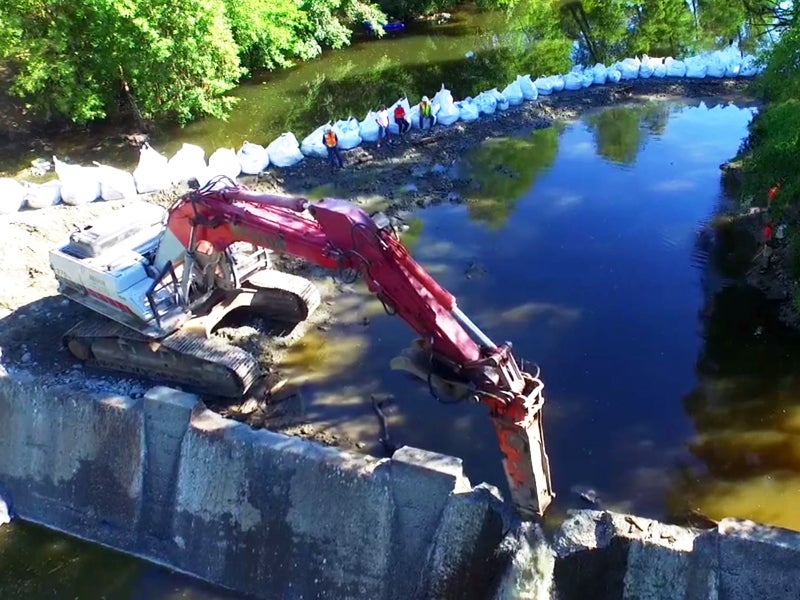The Dance of the Dammed
Two 20-foot high unused dams have been killing salmon in the Rogue River wild and scenic watershed for years, but with Earthjustice’s help those dams are coming down, opening up over 70 miles of prime salmon and steelhead habitat.

This page was published 10 years ago. Find the latest on Earthjustice’s work.
Editor’s Note: Since the publication of this story, both the Wimar and Fielder dams have been completely removed from Evans Creek.
It’s like watching a ballet—two big earth-moving machines perform a slow dance on the banks of Evans Creek and on the crest of an obsolete dam in southern Oregon. That dam, along with its twin just a few miles downstream, is coming out, reviving the creek and opening up over 70 miles of prime salmon and steelhead habitat that have been blocked for more than three-quarters of a century.
This is one of those days when I really love my job—watching those big diggers and the trickle of water become a flow makes me get a catch in my throat.
2015 Wimer Dam Removal from Scott Wright on Vimeo.
The Wimer and Fielder dams were built on Evans Creek—a tributary of the wild and scenic Rogue River—in the 1930s with no fish passage, blocking movement up- and downstream for coho salmon and steelhead. This movement is critical for the species at various life stages. While fish ladders were later cobbled together, they were poorly designed, causing as many fish to die trying to use them as died throwing themselves at the 20-foot dam faces. These dams were abandoned back in the 1970s, but they continued to harm and kill fish year after year even though Oregon law and the Endangered Species Act prohibit maintaining old dams with inadequate fish passage. In 2012, Oregon Fish and Wildlife put the dams on a list of the top 10 threats to fish—what an honor.
When WaterWatch of Oregon approached the current owners of the Fielder dam, the owners initially denied responsibility and refused to cooperate. And even though the state and federal government had repeatedly identified the dams as killing threatened fish, the governments hung back from actually enforcing the law. Earthjustice doesn’t hang back. We worked with WaterWatch to sue under the Endangered Species Act to address the Fielder dam. This is what Earthjustice does so well—enforces the law when government is unwilling to do so.
Facing a lawsuit, the owners of Fielder decided that working with WaterWatch in a cooperative way was a much better alternative, and the owners of the Wimer dam took their example and did the same. The pending-but-stayed lawsuit ensured that the parties continued to cooperate and that those dams were coming down and the stream banks being replanted at no cost to the landowners. Residents will now have a beautiful, free-flowing salmon-bearing stream.
That’s a win worthy of a dance.
Established in 1987, Earthjustice's Northwest Regional Office has been at the forefront of many of the most significant legal decisions safeguarding the Pacific Northwest’s imperiled species, ancient forests, and waterways.